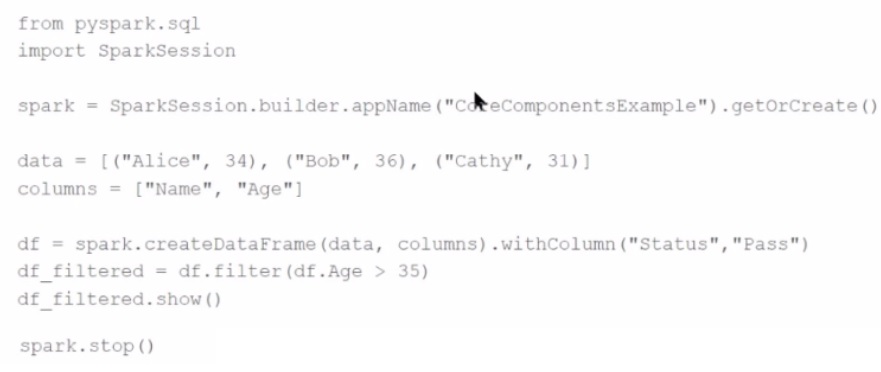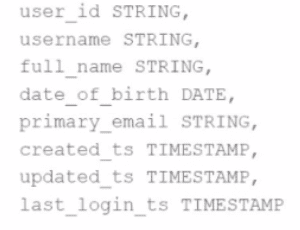Databricks Databricks-Certified-Associate-Developer-for-Apache-Spark-3.5 - Databricks Certified Associate Developer for Apache Spark 3.5 – Python
Total 136 questions
Given the following code snippet in my_spark_app.py:

What is the role of the driver node?
A developer is working with a pandas DataFrame containing user behavior data from a web application.
Which approach should be used for executing a groupBy operation in parallel across all workers in Apache Spark 3.5?
A)
Use the applylnPandas API
B)

C)

D)

What is the benefit of Adaptive Query Execution (AQE)?
43 of 55.
An organization has been running a Spark application in production and is considering disabling the Spark History Server to reduce resource usage.
What will be the impact of disabling the Spark History Server in production?
A data scientist has identified that some records in the user profile table contain null values in any of the fields, and such records should be removed from the dataset before processing. The schema includes fields like user_id, username, date_of_birth, created_ts, etc.
The schema of the user profile table looks like this:

Which block of Spark code can be used to achieve this requirement?
Options:
21 of 55.
What is the behavior of the function date_sub(start, days) if a negative value is passed into the days parameter?
5 of 55.
What is the relationship between jobs, stages, and tasks during execution in Apache Spark?
Given:
python
CopyEdit
spark.sparkContext.setLogLevel("
Which set contains the suitable configuration settings for Spark driver LOG_LEVELs?
A data scientist wants each record in the DataFrame to contain:
The first attempt at the code does read the text files but each record contains a single line. This code is shown below:

The entire contents of a file
The full file path
The issue: reading line-by-line rather than full text per file.
Code:
corpus = spark.read.text("/datasets/raw_txt/*") \
.select('*', '_metadata.file_path')
Which change will ensure one record per file?
Options:
15 of 55.
A data engineer is working on a Streaming DataFrame (streaming_df) with the following streaming data:
id
name
count
timestamp
1
Delhi
20
2024-09-19T10:11
1
Delhi
50
2024-09-19T10:12
2
London
50
2024-09-19T10:15
3
Paris
30
2024-09-19T10:18
3
Paris
20
2024-09-19T10:20
4
Washington
10
2024-09-19T10:22
Which operation is supported with streaming_df?



